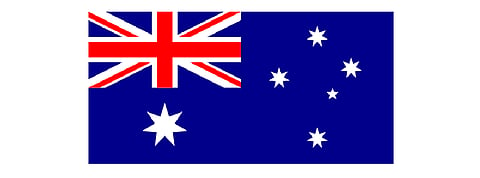

The Australian Renewable Energy Agency (ARENA) is funding two separate feasibility studies exploring ammonia production using renewable hydrogen – that is hydrogen produced with solar and wind power. This, according to ARENA, is a way for the country to create a market for hydrogen helping it produce the gas to be competitive with fossil-fuel based natural gas.
First study
The first study will be conducted by Queensland Nitrates Pty Ltd (QNP) to figure out the feasibility of construction and operation of a renewable ammonia plant at its existing facility near Moura in central Queensland. ARENA is funding this with AUD 1.9 million ($1.28 million). The aim is to produce 20,000 tons of ammonia annually powered by 3,600 tons of renewable hydrogen.
Renewable energy company Neoen and chemicals firm Worley are part of the QNP consortium for the study. If feasible, QNP will produce hydrogen through electrolysers (powered by Neoen's wind/solar/stored renewable energy facilities) for one fifth of its ammonia production.
Second study
The second study ARENA is funding with AUD 980,000 ($662,004) is for Incitec Pivot Limited's Dyno Nobel Moranbah Pty Ltd to conduct and assess the feasibility of building a renewable ammonia facility at its existing Moranbah ammonia plant. The proposed facility will comprise up to 160 MW of electrolysers and a 210 MW solar farm co-located at Moranbah.
The Moranbah facility currently produces over 360,000 tons of ammonium nitrate annually which is supplied to mining customers. This ammonia is produced through hydrogen made with natural gas as its feedstock.
Rationale for hydrogen in Australia
"Hydrogen is a huge opportunity for Australia, both for domestic use and as an export opportunity – and we believe that you cannot realise the export potential without a domestic market, which is why ARENA is looking to fund renewable ammonia and other domestic applications," explained ARENA CEO Darren Miller.
ARENA refers to a study it commissioned in 2018, which concluded that Australia is in a strong position to become a leading exporter of hydrogen and its annual hydrogen export industry could be worth AUD 1.7 billion ($1.15 billion).
As the federal government works out its National Hydrogen Strategy, the renewable energy industry of Australia can hope for renewable hydrogen to provide one of the ways for it to thrive, especially since the government has not come up with any roadmap for the market once Australia achieves its 33,000 GWh large-scale renewable energy target in 2020 as confirmed by the Clean Energy Regulator.
An August 2019 BloombergNEF study claimed huge future potential for renewable hydrogen forecasting it to become cost competitive with that produced using fossil fuel power (see Sharp Drop In Costs For RE Powered Hydrogen By 2050).
.png?w=50&fm=png)